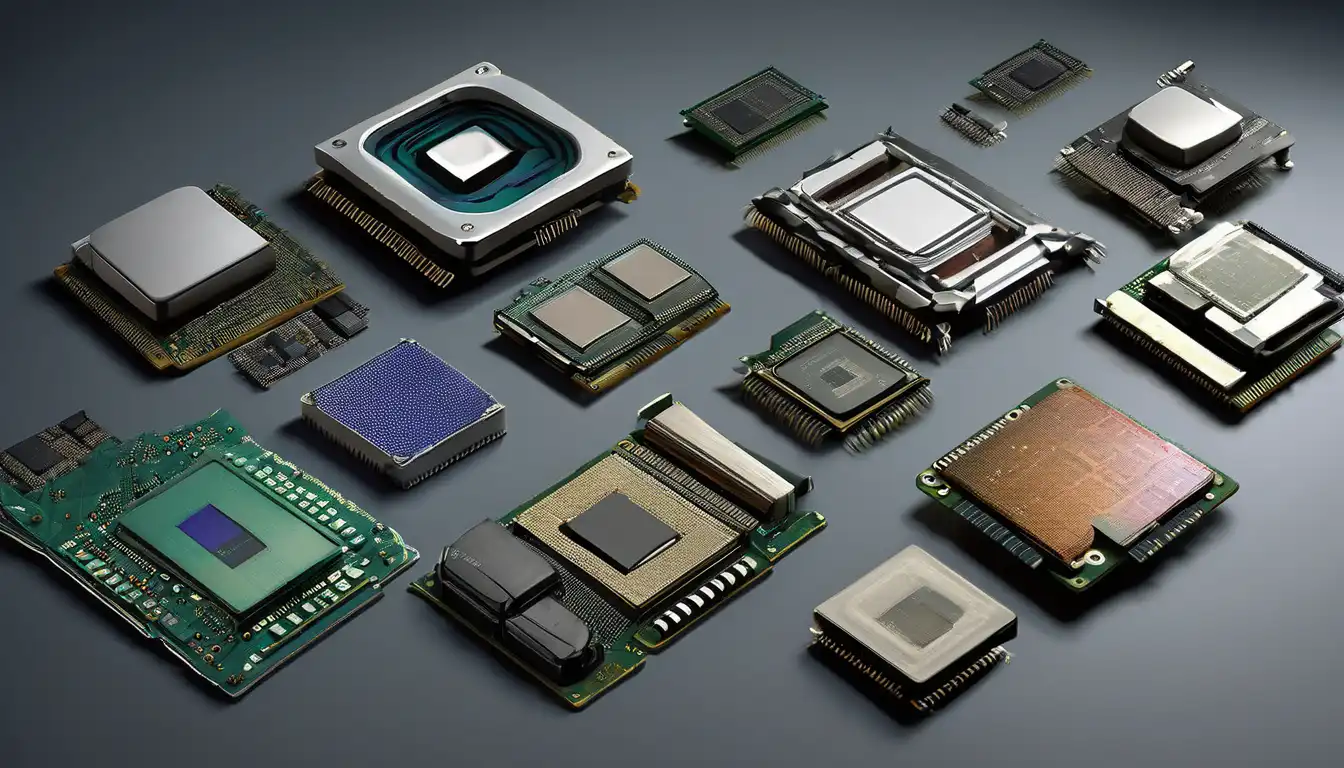The Dawn of Computing: Early Processor Technologies
The evolution of computer processors represents one of the most remarkable technological journeys in human history. Beginning with primitive vacuum tube systems in the 1940s, processors have undergone revolutionary changes that have fundamentally transformed how we live, work, and communicate. The first electronic computers, such as ENIAC, utilized thousands of vacuum tubes that consumed enormous amounts of power and required constant maintenance. These early processors operated at speeds measured in kilohertz, yet they laid the foundation for the digital revolution that would follow.
The Transistor Revolution
The invention of the transistor in 1947 marked a pivotal moment in processor evolution. Transistors replaced bulky vacuum tubes, offering smaller size, lower power consumption, and greater reliability. This breakthrough enabled the development of more compact and efficient computers. By the late 1950s, transistors had become the standard building blocks for processors, leading to the creation of mainframe computers that could handle complex calculations for scientific and business applications.
The Integrated Circuit Era
The 1960s witnessed another quantum leap with the development of integrated circuits (ICs). Jack Kilby and Robert Noyce independently invented methods to combine multiple transistors on a single silicon chip, creating the first microchips. This innovation dramatically reduced the size and cost of processors while improving performance. The introduction of ICs paved the way for minicomputers that brought computing power to smaller organizations and research institutions.
The Birth of Microprocessors
1971 marked a watershed moment when Intel introduced the 4004, the world's first commercially available microprocessor. This 4-bit processor contained 2,300 transistors and operated at 740 kHz. Despite its modest specifications by today's standards, the 4004 demonstrated that complete central processing units could be manufactured on a single chip. This breakthrough made personal computing economically feasible and set the stage for the digital age.
The Personal Computer Revolution
The late 1970s and 1980s saw processors evolve rapidly to meet the demands of the growing personal computer market. Intel's 8086 and 8088 processors powered the first IBM PCs, establishing the x86 architecture that would dominate personal computing for decades. Meanwhile, competitors like Motorola with their 68000 series processors found success in early Apple Macintosh computers and workstations. This era also saw the emergence of reduced instruction set computing (RISC) architectures, which offered improved performance for specific applications.
The Clock Speed Race
Throughout the 1990s, processor manufacturers engaged in an intense competition to increase clock speeds. Intel's Pentium processors became household names, while AMD emerged as a serious competitor with their Athlon series. Clock speeds climbed from tens of megahertz to multiple gigahertz, delivering unprecedented performance for both business and entertainment applications. This period also saw the introduction of multimedia extensions like MMX and SSE, which enhanced processors' capabilities for graphics and audio processing.
The Multi-Core Revolution
By the early 2000s, physical limitations made further clock speed increases increasingly difficult due to heat dissipation and power consumption issues. Processor manufacturers responded by shifting to multi-core designs. Instead of making single cores faster, they began integrating multiple processor cores on a single chip. This approach allowed for better parallel processing and improved overall performance without requiring dramatic clock speed increases. Today, even mainstream processors typically feature multiple cores, with high-end models offering dozens of cores for specialized applications.
Specialized Processing Units
Modern processor evolution has seen increasing specialization to meet diverse computational needs. Graphics processing units (GPUs) have evolved from simple display controllers to powerful parallel processors capable of handling complex calculations for artificial intelligence, scientific simulations, and cryptocurrency mining. Other specialized processors include digital signal processors for audio and video processing, neural processing units for AI workloads, and field-programmable gate arrays for customizable hardware acceleration.
Current Trends and Future Directions
Today's processor evolution focuses on several key trends. Heterogeneous computing combines different types of processing units on a single chip to optimize performance for specific tasks. Energy efficiency has become a primary concern, driving innovations in power management and low-power architectures. The integration of artificial intelligence capabilities directly into processors represents the latest frontier, with dedicated AI accelerators becoming standard features in modern CPUs.
Quantum Computing and Beyond
Looking to the future, quantum processors represent the next potential revolution in computing technology. Unlike classical processors that use bits representing 0 or 1, quantum processors use qubits that can exist in multiple states simultaneously. While still in early development stages, quantum processors promise to solve certain types of problems that are practically impossible for classical computers. Other emerging technologies include neuromorphic computing, which mimics the structure and function of the human brain, and optical computing, which uses light instead of electricity for processing.
The Impact on Society
The evolution of computer processors has profoundly transformed nearly every aspect of modern society. From enabling global communication networks to powering medical research and driving economic growth, processors have become fundamental infrastructure. The continuous improvement in processing power, guided by Moore's Law for several decades, has made increasingly sophisticated technologies accessible to billions of people worldwide. As processor technology continues to advance, we can expect even more transformative applications in fields like artificial intelligence, healthcare, and sustainable energy.
Environmental Considerations
As processor technology advances, environmental concerns have become increasingly important. The manufacturing process for modern processors requires significant energy and resources, while data centers consume enormous amounts of electricity. Future processor evolution must balance performance improvements with sustainability goals. Innovations in green computing and energy-efficient designs will be crucial for ensuring that technological progress remains environmentally responsible.
The journey of processor evolution demonstrates humanity's remarkable capacity for innovation. From room-sized vacuum tube computers to smartphones containing processors more powerful than supercomputers from just a few decades ago, this technological progression has been nothing short of extraordinary. As we look toward future developments in quantum computing and beyond, the evolution of computer processors continues to shape our world in ways we're only beginning to understand.
